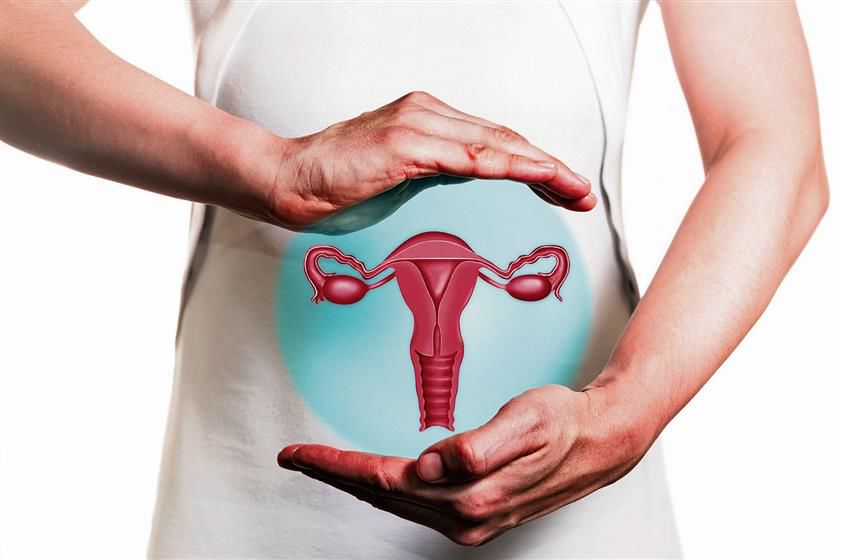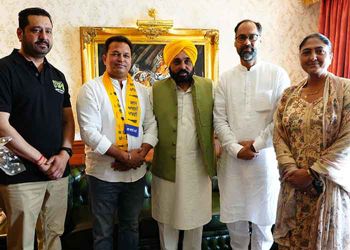
Caution: There is a need to strike a balance between a woman’s desire to become a mother and the potential medical problems she might face during pregnancy. iStock
Shailaja Chandra
Ex-Secretary, Health Ministry, and former Chief Secy, Delhi
WHEN Punjabi singer Sidhu Moosewala was gunned down about two years ago, who would have thought that his mother would go on to have a baby, and that too at the age of 58? The surprise development has raised a host of questions about the safety of everything surrounding the in vitro fertilisation (IVF) procedure, which is used to help a woman get pregnant. During IVF, the ovaries are stimulated to produce multiple eggs, which are removed and fertilised with the man’s sperm to create embryos in a laboratory setting. The embryo is later transferred back into the uterus, where it is expected to develop, grow and result in childbirth.
Newspaper reports say that Moosewala’s parents had gone abroad for IVF treatment, while the baby was delivered at a hospital in Bathinda. Regardless of the claims or the alleged harassment faced by the family, the regulation of IVF in general and its use on older women in particular remain pivotal for needy parents.
While the procedure has given hope and brought joy to countless couples, questions about the safety of the mother and child, the rights of women versus family pressure to bear a child, the legal status of the embryo and the care of a child born to older women are being raised.
Under the Assisted Reproductive Technology (ART) Regulation Act, 2021, the normal upper age limit to undergo the ART procedure is 50 years. The Department of Health Research of the Health Ministry has asked the Punjab Government to investigate the matter and report on the pregnancy, which Moosewala’s mother underwent several years beyond the prescribed age limit.
The ART Act restricts the upper age of the woman to 50 years because several adverse risks are associated with age. Dr Shalini Singh, Director of the National Institute of Cancer Prevention and Research at the Indian Council of Medical Research, talked to me about the increased risk of gestational diabetes, pre-eclampsia and multiple births, among other risks, that older women face. Hormones need to be pumped into the woman to stimulate conception, and it could have adverse fallouts, the extent of which may not be fully explained to or understood by the couples. The possibility of preterm deliveries, stillbirths and multiple births increases, which is why a comprehensive health check-up is essential even when IVF is sought to be undertaken in much younger women.
Apart from age, there is also the question of clinical capability at the IVF facility. The 2021 Act lays down a slew of regulations with regard to registration with a national registry and freezing of gametes and embryos that clinics and assisted reproductive technology banks must adhere to. A national board is expected to lay down the code of conduct to be observed by persons working at fertility clinics and set the minimum standards of physical infrastructure, laboratory and diagnostic equipment and the engagement of expert manpower. The state boards have a responsibility to follow the policies and plans prescribed by the national board.
Sperm and egg donors must be registered and monitored by the banks, which are required to keep accurate and current records of all donors. The regulations also provide for a grievance cell, adhere to embargoes on genetic testing for sex determination or alteration of the genetic characteristics of the embryo, prescribe guidelines for cryopreservation and provide for insurance cover for unforeseen events.
India has one of the highest numbers of ART centres that perform numerous cycles across the country. Though it has come as a ray of hope for countless couples, numerous legal, ethical and social issues have complicated the picture. There is a need to balance the desire of a woman to become pregnant with the potential medical problems she might face. From a feminist point of view, socialists have highlighted that IVF technologies can further strengthen the prevalent patriarchal values, including the immense pressure on a woman to become a mother and produce a healthy baby.
The legal age limit of 50 years shows concern for the fact that as a woman grows older, her eggs also age, which increases the chances of genetic anomalies and miscarriage. That is the reason why some couples opt for donor eggs. Even so, the age limit of 50 years is not cast in stone because, under Section 21(g)(i) of the Act, exceptions are possible after a medical evaluation that certifies that the woman is fit to undergo the procedure. The question is: how does one obtain that certification? That process is not widely known and needs to be publicised.
India has come a long way by introducing and regulating infertility clinics as well as the whole process of donation and conception. It speaks volumes about the technological prowess of the medical fraternity and the availability of regulations to administer the entire gamut of infertility treatment. What remains are concerns about the efficiency and reliability of law enforcement agencies in the states, where it is common knowledge that the capacity and willingness to enforce the law are irregular or even deficient. Only if the national registry and the board exercise tight control and do it without creating unnecessary hurdles can one hope for compliance, tempered with compassion.
The other important concern is the cost. While public sector hospitals that undertake IVF are reported to charge around Rs 50,000 for a procedure, private clinics are known to charge anything upward of Rs 5 lakh — it can double or triple, depending on the facility. It is difficult to regulate prices when there is a willingness to pay, but overt commercialisation must be reined in.
As hundreds of couples hope to have a child at long last, the onus is on governments to make them aware of the risks involved. Besides, there is a need to exhibit empathy and understanding when dealing with this sensitive area, and not just confine regulation to a narrow interpretation of a law that can gift a life!
Join Whatsapp Channel of The Tribune for latest updates.




























